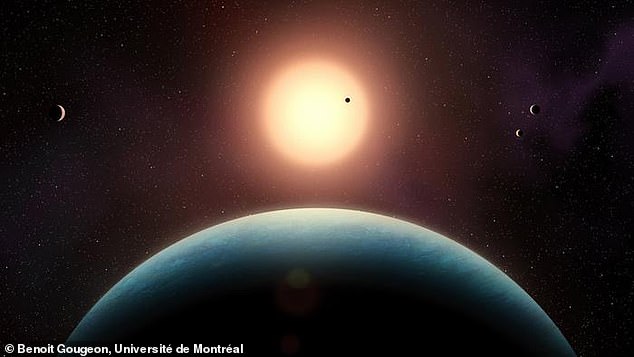
Potentially Habitable Super-Earth Discovered 35 Light-Years Away, Could Harbor Alien Life
Could This Super-Earth Host Alien Life? New Discovery Sparks Excitement
NASA’s TESS space telescope has identified a potentially habitable "super-Earth" 35 light-years away, bringing scientists closer to answering whether we’re alone in the universe. Named L 98-59 f, the planet orbits a red dwarf star called L 98-59 and lies within its habitable zone—where liquid water, and possibly life, could exist.

NASA’s TESS telescope detected the L 98-59 system, now home to five confirmed planets.
A Hidden World Revealed
Originally discovered in 2019 with four planets, the L 98-59 system surprised astronomers when a fifth planet was found using data from ground and space telescopes. Unlike the others, L 98-59 f doesn’t transit its star but revealed itself through subtle gravitational tugs on the star’s motion. Charles Cadieux, lead researcher, called the find "remarkable," noting it underscores the diversity of exoplanetary systems.
The Habitable Zone Candidate
L 98-59 f receives stellar energy similar to Earth, placing it firmly in the habitable zone. While its composition remains unknown, the potential for liquid water makes it a prime candidate for future study.
Meet the Planetary Family
- L 98-59 b: Smallest, rocky, half Earth’s mass.
- L 98-59 c & d: Volcanic or water-rich worlds.
- L 98-59 e: A super-Earth with a 12.8-day year.
- L 98-59 f: The temperate, potentially habitable newcomer.

Artist’s impression of L 98-59 b, a rocky world half Earth’s mass.
Why Red Dwarfs Matter
Red dwarfs, smaller and cooler than our Sun, are common in the galaxy. Studying their planets—like those in the L 98-59 and TRAPPIST-1 systems—helps scientists understand if rocky worlds around such stars can sustain atmospheres.
Next Steps: James Webb Telescope
Researchers aim to use the James Webb Space Telescope (JWST) to analyze the planets’ atmospheres. “L 98-59 offers a unique lab to explore super-Earths and sub-Neptunes,” said co-author René Doyon.

Size comparison: L 98-59b (smaller than Earth) and neighboring planets.
The Bigger Picture
This discovery highlights the potential for life-supporting worlds beyond our solar system while paving the way for JWST to uncover deeper mysteries about alien planets. As co-author Alexandrine L’Heureux noted, systems like L 98-59 could reshape our understanding of cosmic diversity.
(Word count: ~600)


